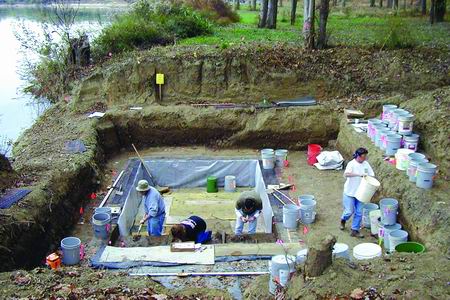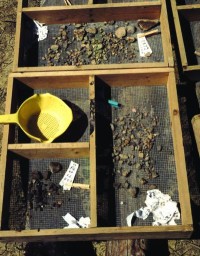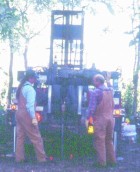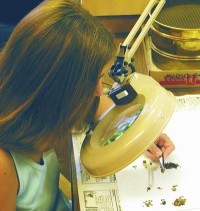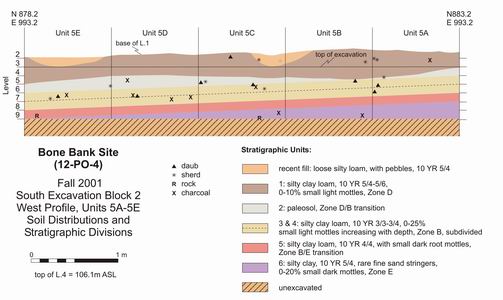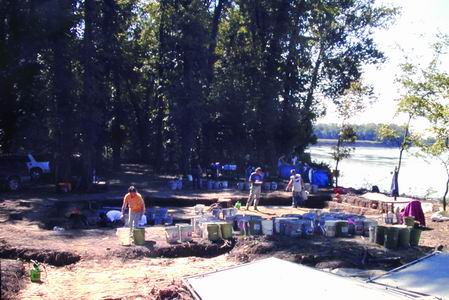The Rescue Excavations
With a sense of urgency we sought funds for a rescue excavation project. Thanks
to an innovative Indiana agency and grant program - the Wabash River Heritage
Commission - the Bone Bank rescue project in 2000-2003 became the first state-funded
effort to mitigate erosional impacts at an archaeological site. The project
was carried out by Indiana University, with administration provided by a regional
not-for-profit organization, the Four Rivers Resource Conservation and Development
Area, Inc., Indiana University, private individuals, trusts, and local organizations
provided the matching contributions. Four universities and the Indiana Geological
Survey loaned equipment. Volunteer field workers included students, faculty,
and avocational archaeologists.
Excavations in 2000 and 2001 necessarily took place in the fall during low
river levels, and investigated cultural deposits in three areas.
| II. South Block 1,
Terrace |
|
The goal of the rescue effort on the terrace was to excavate any intact
features remaining in this deflated area of "high ground."
- This work was the first opportunity to excavate a sizable area at
the edge of a Caborn-Welborn village and to search for evidence of a
palisade.
- Backhoe stripping and shovel scraping exposed 335 m2.
- The bottoms of several pit features and postholes were found.
- Any shallow features - such as wall trenches for houses or a palisade
wall - would have been eroded away.
- Therefore, we still do not have solid evidence of village fortifications
for the Caborn-Welborn phase, although midden-staining at other large
villages suggests this possibility.
|
 |
| South Block 1 search for features |
 |
| basal portion of cylindrical
storage pit |
No additional features were found in the lakeshore locale beyond those identified
during testing. The pits in this area are limited to shallow basins interpreted
as baking facilities.
The lowest Mississippian deposits in the lakeshore midden contain Caborn-Welborn
materials mixed with small numbers of Woodland and Archaic artifacts. These
deposits represent the paleosurface that was subsequently covered by additional
Caborn-Welborn artifacts and silts.
As in the previous year at the North Block, excavation at the lakeshore midden
concluded when flooding threatened to inundate the work area.

